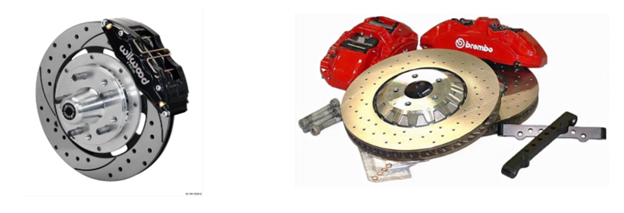Sign up now to join the JEGS email newsletter and be the first to learn about new products, special deals and e-mail only offers!


Most lights are typically welcome inside a car. From headlights to interior lights that allow you to see within your car, vehicle lights are usually a good thing. However, some lights are not great to see, and those include that dreaded brake warning light.
We've all been there! You have your whole day mapped out and started the car to begin your day. Then, out of nowhere, you see an illuminated dashboard light that signifies something is wrong with your brakes. Now, you've got to change your plans and possibly prepare for a costly repair.
So, what does it mean when a brake warning light comes on? What should you do if it happens? Knowing these details can help you preserve your vehicle and ensure your safety. Here at JEGS, we care about car health, so below, we outline some things you can do when and if your car's brake warning light on the dashboard goes on.
The brake warning light indicates something is wrong with your vehicle's braking system. It is an alert for you to give that area a look to see what is going on. While it might be tempting to ignore this signal, you could save time and money by pausing to see what could be causing the warning light to come on.
There are a few common reasons why your brake light could be flashing, and you'll get a sense of the cause by seeing which brake light is illuminated. For example, if you see a circle with a "P" in the middle, that means your parking brake is engaged.
A circular sign with a wavy line inside below the middle might mean your car's brake fluid is low. An empty circle could mean that your brake pads are worn and that they need to be replaced. These signs can vary based on the type of vehicle you have.



Sign up now to join the JEGS email newsletter and be the first to learn about new products, special deals and e-mail only offers!

What you should do when the brake warning light turns on depends heavily on when these lights come on. If these lights come on when you turn on the car, it's important not to try driving the vehicle. Driving with a compromised braking system is dangerous, as it may keep you from being able to stop your vehicle safely. Therefore, it's best to see what the sign could indicate and then take measures to repair the issue.
Alternatively, if the light comes on while you're driving, you'll want to avoid panicking and navigate slowly to a safe area where you can park. Depending on the problem, you may need to have your vehicle towed to a mechanic.
Here are a few reasons your brake light might come on:
While brake lights are an unwelcome sight, they are there to help you from driving without a working brake system. So, always pay attention to your car's dashboard when you turn the ignition. All of your car's warning lights should flash to show they are working.
If these lights do not illuminate, you should check for an issue like a worn bulb. You always want to be notified of any braking or other mechanical problems. Therefore, make sure these lights are always operational.
No, you should not drive if your brake warning light goes on. While it's true that the issue could be as simple as the parking brake being engaged, it could also be that your brake system is leaking or that you are low on brake fluid, making it harder for you to engage your brake if needed, which can cause an accident.
A brake warning light is an indication that your brakes are not functioning properly. Instead of driving, run through the checks above to see what repairs are needed for the braking system.
While it isn't ideal, what steps can you take if you do need to repair your braking system but rather repair the issue yourself? At JEGS, we're here to empower all DIYers and those who want an excellent price for their vehicle's parts.
We offer a variety of high-quality brake-related products. If you need to make brake repairs, take a look at our brake product offerings.



